A 3 Day Journey Along The Hokkaido Shinkansen
Have you ever taken a trip on the Shinkansen in Japan? It is said that the speed and stability of the Shinkansen, which Japanese people usually use for travel and business, make it one of the best passenger trains in the world. On this trip, I took a ride on the Hokkaido Shinkansen, which opened in March 2016. The line connects Shin-Aomori Station in Aomori Prefecture and Shin-Hakodate Hokuto Station in Hokkaido running through the world’s longest undersea tunnel on the way. By March 2030, the line is scheduled to be extended as far as Sapporo, the central city of Hokkaido.
Many visitors to Japan head to the cities of Tokyo, Osaka, and Kyoto on the so-called Golden Route but miss out on the stunning natural beauty and unique culture of Hokkaido. On this trip, I took the Shinkansen to enjoy Akita Prefecture, Aomori Prefecture, and southern Hokkaido in winter. I experienced everything from playing with cute Akita inu in Odate to learning how to balance a 10-meter pole on my hand in Akita, to panoramic views of historic Hakodate, marveling at ancient Jomon settlements in Aomori and enjoying winter activities in this snowy wilderness in Onuma Quasi National Park in southern Hokkaido. By the end of my journey, I had completely fallen in love with this part of Japan and gained an understanding of what makes Akita, Aomori, and Hokkaido so special.
Day 1 – Exploring Akita and the Oga Peninsula Before Eating Kiritanpo Nabe in Odate
Day 1 Part 2 – Staying in Odate and Learning about Akita Inu Dogs
Day 2 – Exploring the Jomon Culture in Aomori Before Travelling to Hakodate on the Hokkaido Shinkansen
Day 2 Part 2 – Goryokaku in Hakodate and Spending the Night in Yunokawa Onsen (this article)
Day 3 – Enjoy seafood in Shikabe and winter activities in Onuma Quasi National Park
Hakodate is full of historic, maritime charm. The port is surrounded by small restaurants that would once have been filled with fishermen returning from a day at sea. It’s not difficult to imagine how this vibrant trading town once looked.
Hakodate is also world-famous for its “Night View from Mount Hakodate,” which received three stars in the Michelin Green Guide Japan. Since the city is surrounded by the sea on three sides, visitors can enjoy fresh seafood, Hakodate ramen and other Hakodate gourmet treats.
Since ancient times, Hakodate has prospered as the gateway to Hokkaido and it’s dotted with many historical sights that allow visitors to get a feel for its past. The city is a blend of old and new; with gleaming shopping centres and colourful, tiny cafes. Jonathan and I had the pleasure of spending a night here.
A Different View of Hakodate
Many popular areas can be found around Hakodate Station. Immediately next to the station is the “Hakodate Morning Market Area“, a gourmet spot with about 250 restaurants. Beyond the station is the “Hakodate Bay Area“, a shopping and gourmet area of red-brick warehouses with famous views of Mount Hakodate.
Many people know the city for Mount Hakodate and its famous night view which is regarded as one of the best night views in the world. However, there is another view that is also impressive.
We took the tram from Hakodate Station to two popular areas; the Goryokaku area and Yunokawa Onsen, both of which allowed us to enjoy special views of the surroundings.
Located around 30 minutes by tram from Hakodate Station is Goryokaku Tower with its panoramic view of Goryokaku. The area is regarded as a symbol of Hakodate.
The 107m-high tower is situated on the edge of Goryokaku Park and offers panoramic views of the city and even the island of Honshu in the distance. However, the most impressive sight is the star-shaped fort at the base of the tower. The fort was built in the late 1800s by the ruling Tokugawa Shogunate to house the Hakodate government which had the task of overseeing negotiations with foreign countries and the defence of northern Japan. The fort was inspired by fortified cities in Europe and opened as a public park in 1914. The observation deck, situated 90 meters above the ground, can be reached by elevator in around 2 minutes and offers stunning views of the surrounding area at any time of year. It is especially impressive during the ‘sakura’ (cherry blossom) season as the fort is surrounded by beautiful cherry blossom trees.
It’s a spacious area where you can freely walk around and take in the view or enjoy an ice cream in the cafe. For those that are brave enough, there is even a glass floor panel that looks down to the street below!
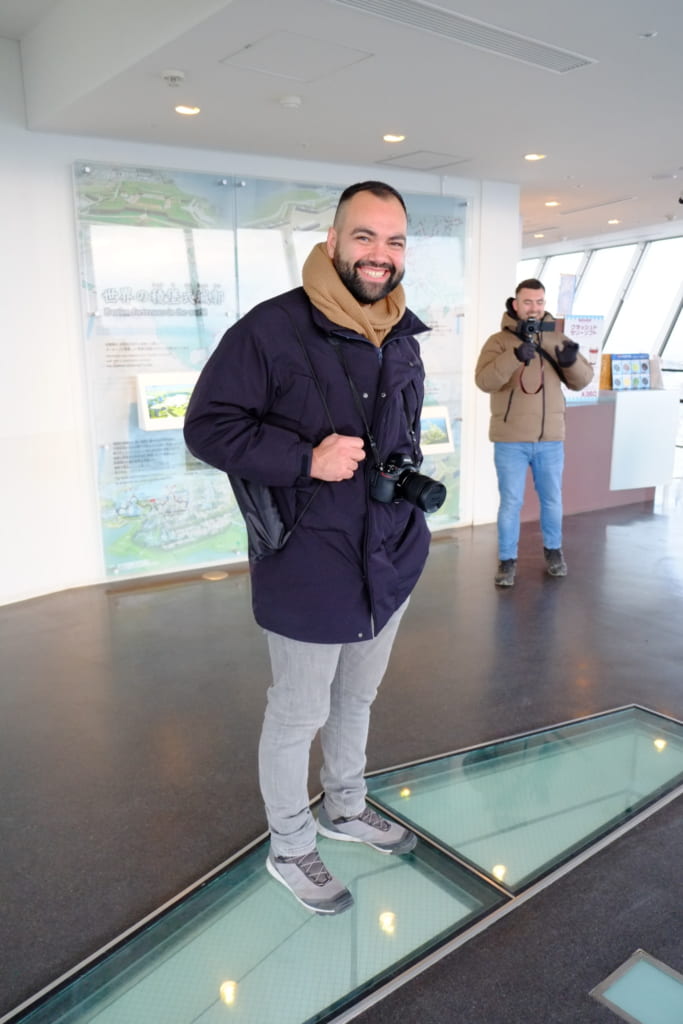
We spent a considerable amount of time marveling at the view and staring out towards the partially frozen waters of the fort. In the distance, ships passed through the Tsugaru Strait as the sun disappeared behind the mountains.
Dining in Hakodate: A Feast of Fresh Seafood
It was bitterly cold in Hakodate and the winter weather made us crave some warm Japanese food. As the Goryokaku area is a gourmet spot with many restaurants, visitors will have no problem finding a cosy place to sample the local delights. Hakodate is famous for squid, and a dish dubbed ‘the dancing squid’ recently gained a great deal of interest on the Internet as freshly-cut tentacles appeared to dance when soy sauce was poured over them. It’s fair to say that seafood in Hakodate is served as fresh as possible, which we realised when a whole, live squid was placed in front of us.
Whilst it might not be everyone’s preferred way to eat, the squid sashimi was quite unlike anything that we had ever tasted. As squid has a somewhat chewy texture, it’s best to enjoy it when it’s as fresh as possible and you really can’t get much fresher. We ate a jacket potato with fermented squid sauce and a range of other sashimi (raw fish) including tuna, prawns, scallops, and herring. At the end of the meal, the squid was diced and served as deep-fried tempura which was delicious.
We enjoyed a total of 11 different courses and by the end of the meal, Jonathan and I felt we had experienced some truly unique seafood of the highest quality.
Staying in Hakodate: An Onsen Hotel
After enjoying seafood in the Goryokaku area, we took the tram to the Yunokawa Onsen in Hakodate, one of the three major hot spring areas in Hokkaido with a history of over 350 years. It has a diverse range of accommodation; from traditional inns to modern hotels, as well as a number of eateries in the vicinity. Depending on the facility, you can enjoy bathing in the hot springs while looking out towards the smooth, colourless waters of Hakodate Bay in the distance. There is also a “footbath” at the corner of the intersection near the tram stop which visitors and locals can enjoy for free.
Our hotel was located in the Yunokawa Onsen area of Hakodate, a cluster of traditional Japanese ryokan (inns) that benefit from the Yunokawa hot spring water source. Small red bridges criss-cross the river and are such a quintessential image of Japan, especially in the snow.
Our hotel had over 130 rooms of various types, from traditional tatami rooms to rooms with their own private hot spring. The hotel had a large restaurant, tea lounge, souvenir shop and even a late-night noodle bar where guests could enjoy a hot bowl of steaming ramen in their night attire before bed. The main attraction at the hotel was the hot spring baths which included both indoor and outdoor areas.
The feeling of relaxing in hot, silky waters surrounded by ornate bamboo and carefully-manicured Japanese rockeries is one of the greatest pleasures about traveling in Japan and the perfect way to end a day in Hokkaido.
You can read my next article by clicking here.
How To Get To Hakodate
From Tokyo to Shin-Hakodate-Hokuto Station: It takes about 4 hours and 10 minutes by JR Tohoku / Hokkaido Shinkansen Hayabusa.
From Shin-Hakodate-Hokuto Station to Hakodate Station: About 15-25 minutes by JR Hakodate Main Line
To get to Goryokaku Tower:
From Hakodate Station: 20 minutes by streetcar, 8 minutes walk from Goryokaku Koen Station.
From Shin-Hakodate Hokuto Station: Take a shuttle bus to Goryokaku Tower and arrive in about 30 minutes.
Photo by Jonathan Reeve and Mark Webster
Sponsored by Hokkaido Government.
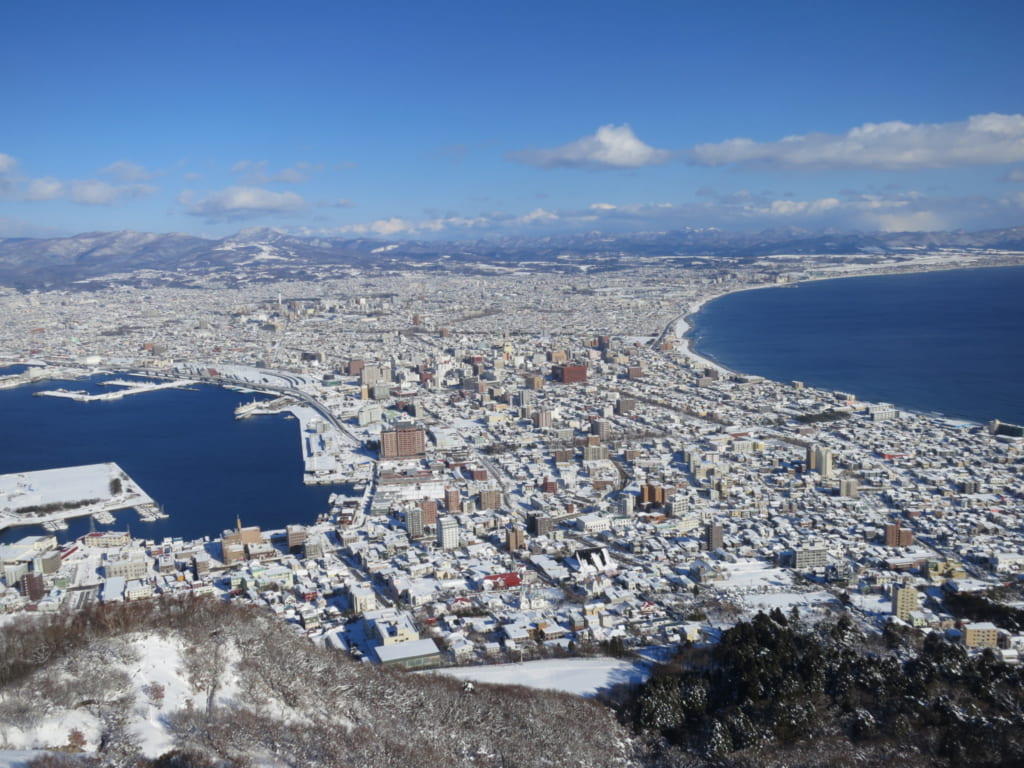
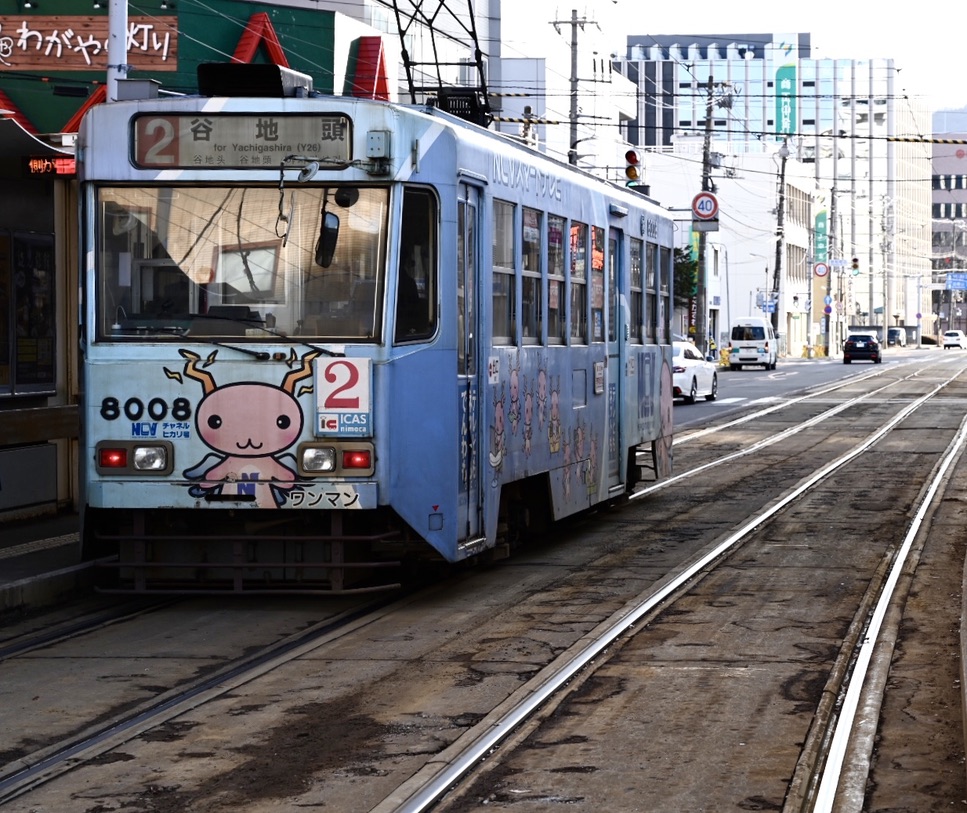
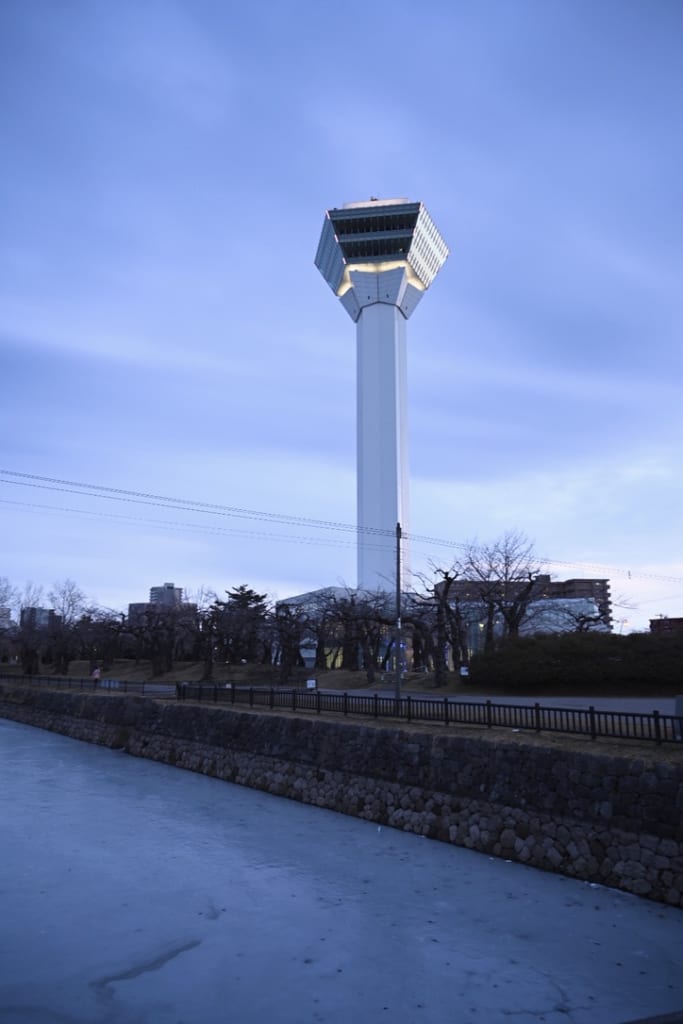
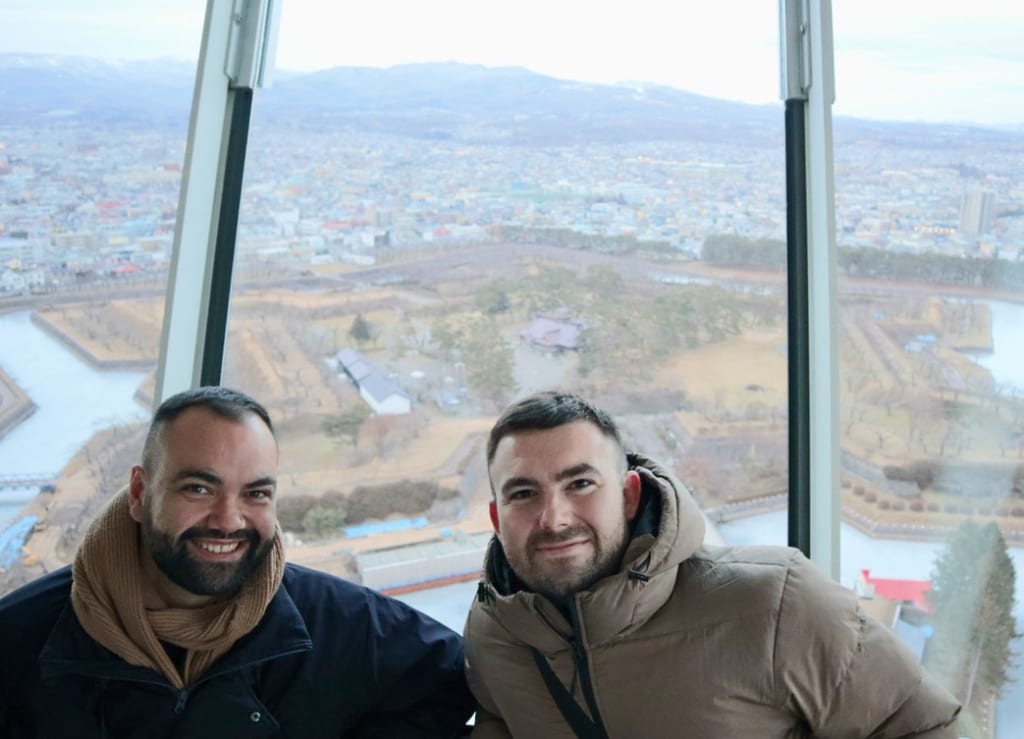
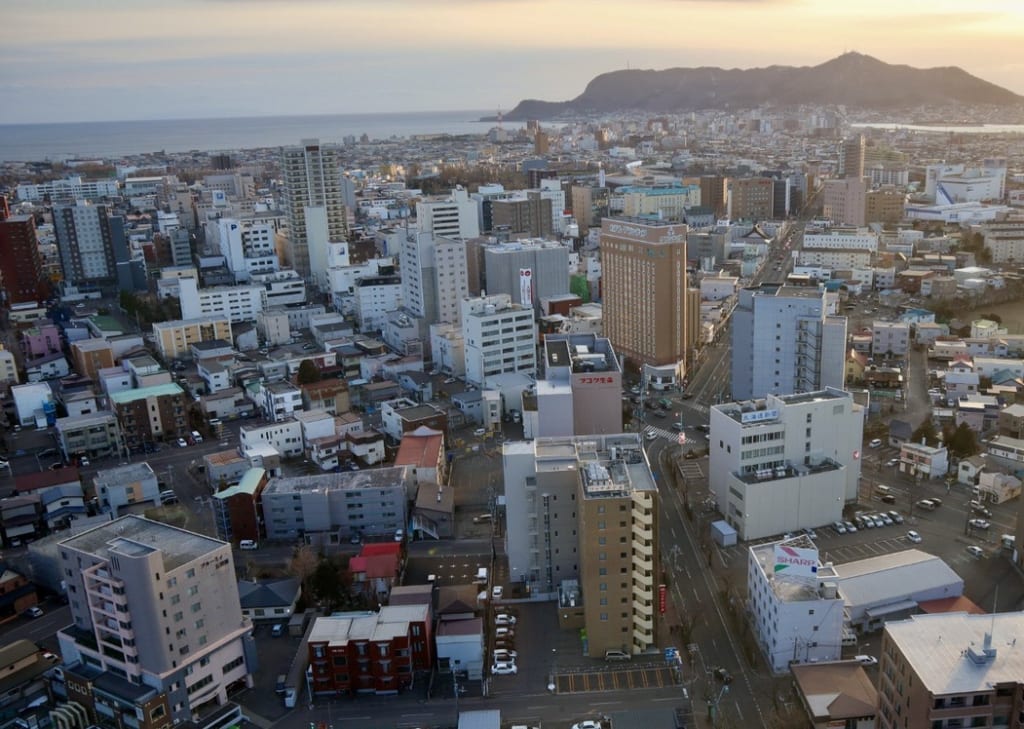
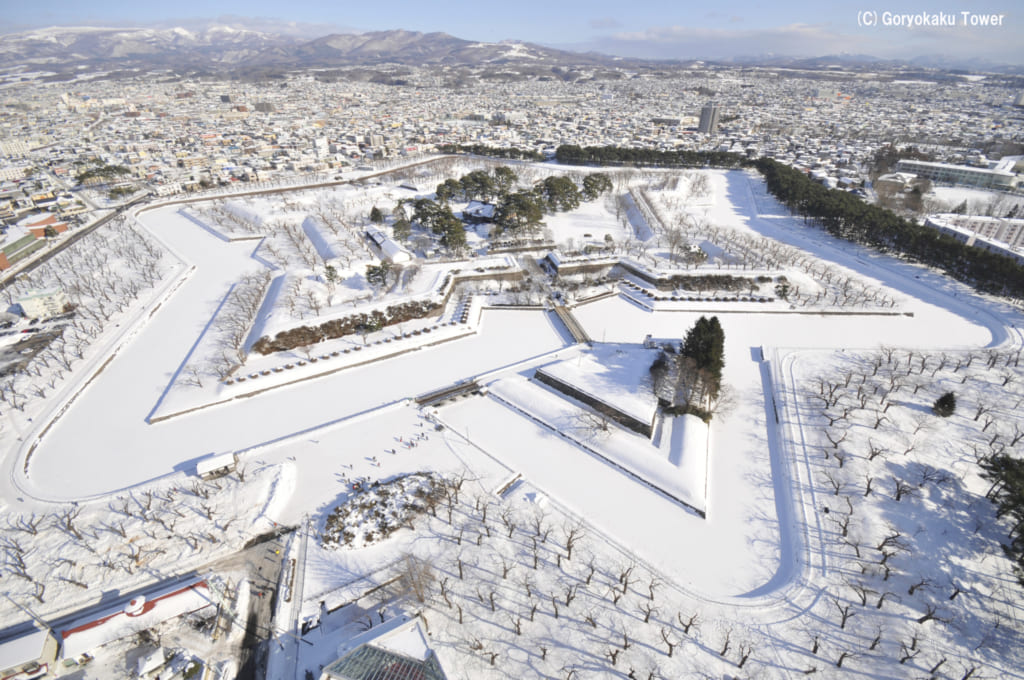

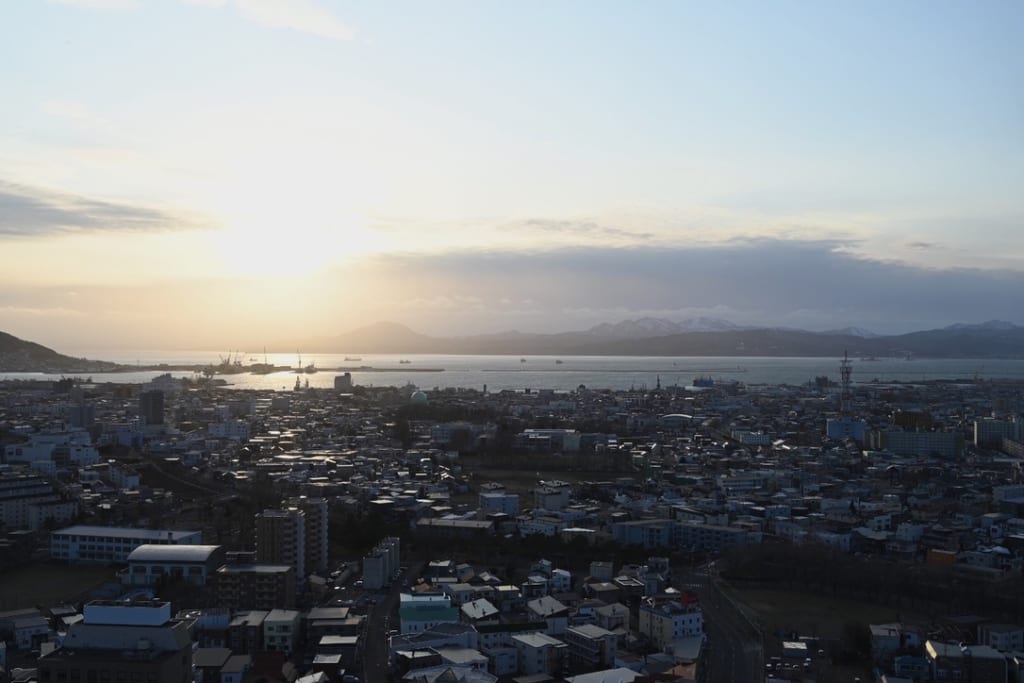
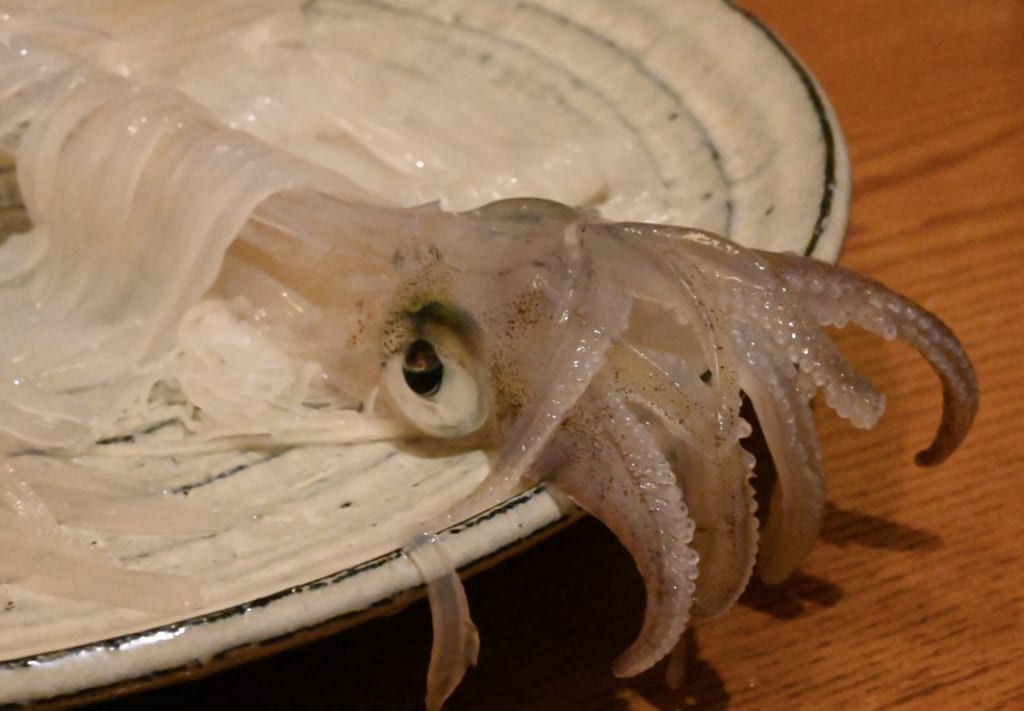

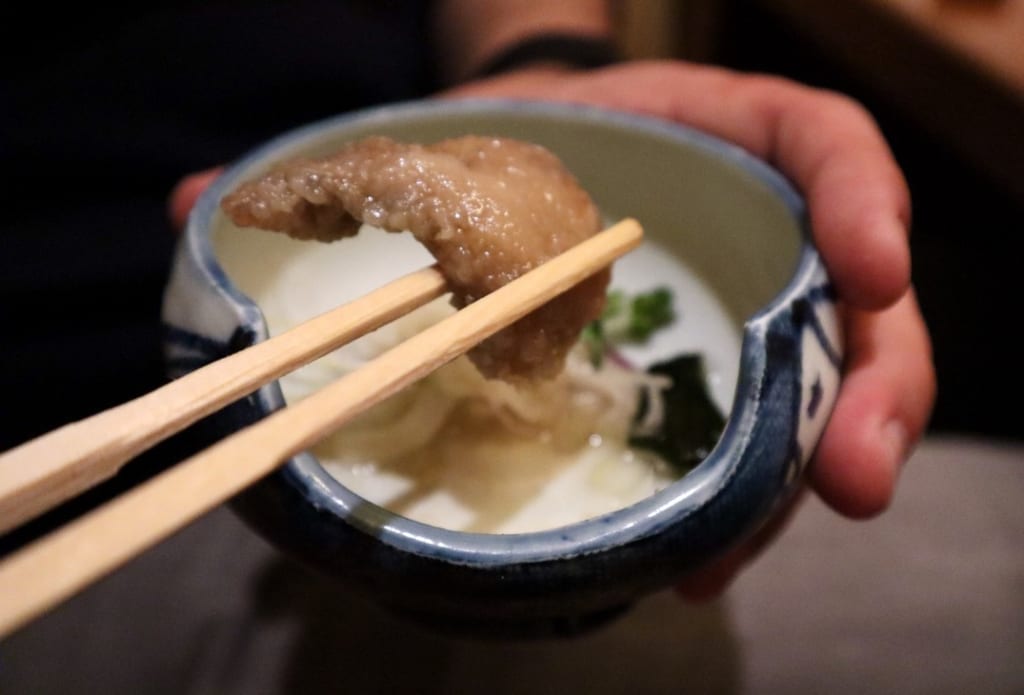
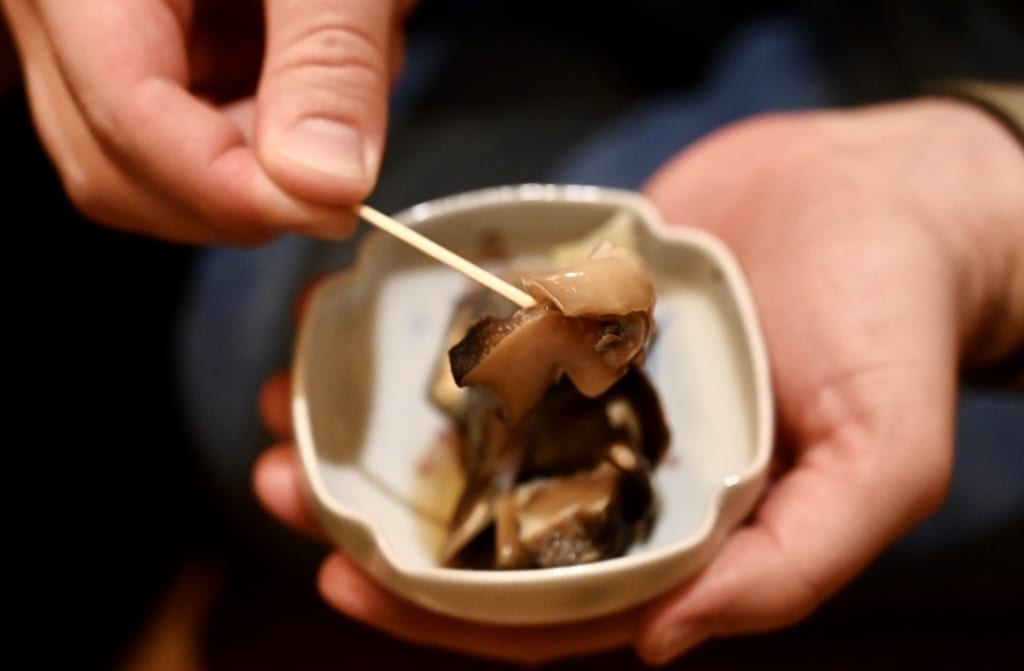
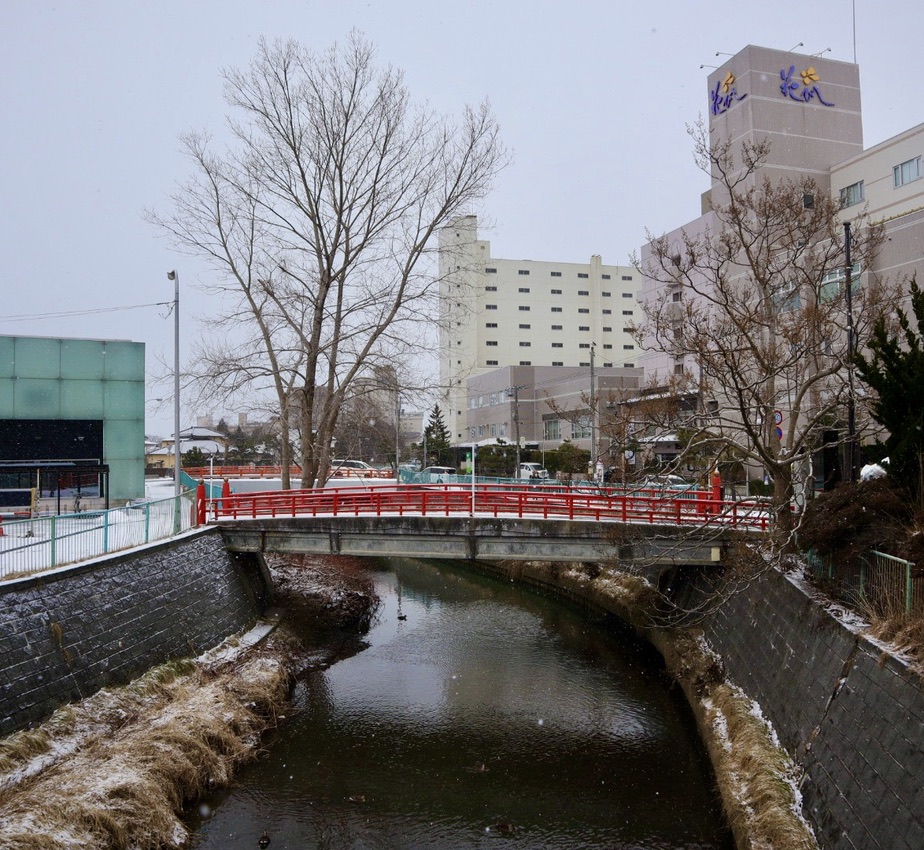
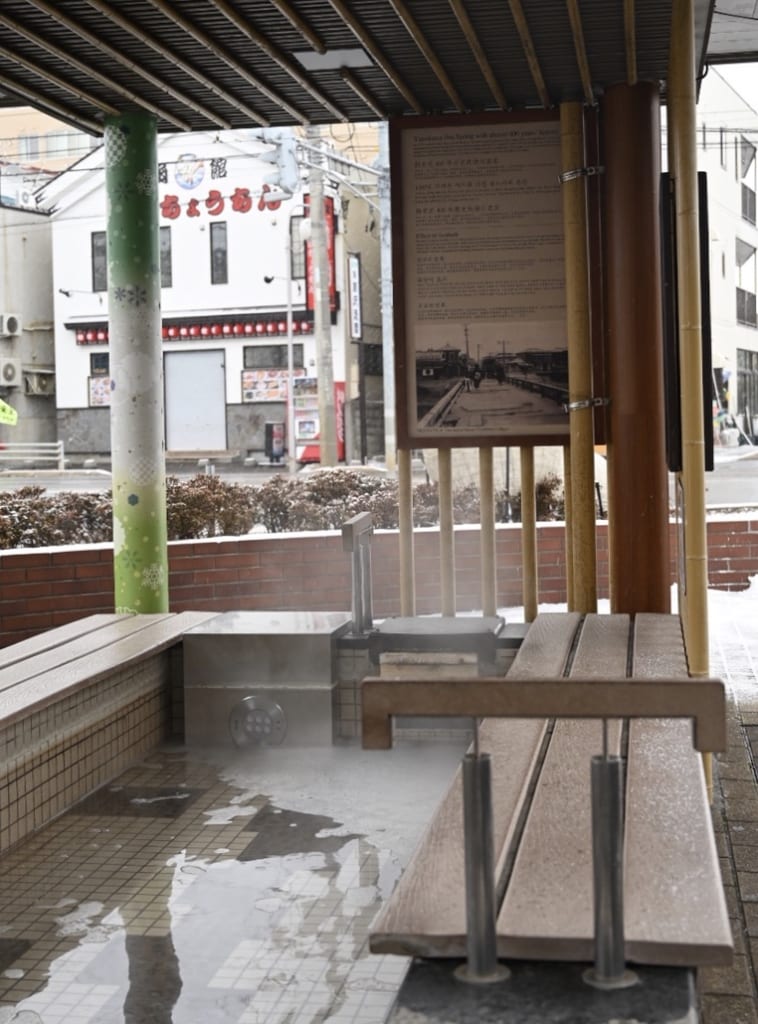
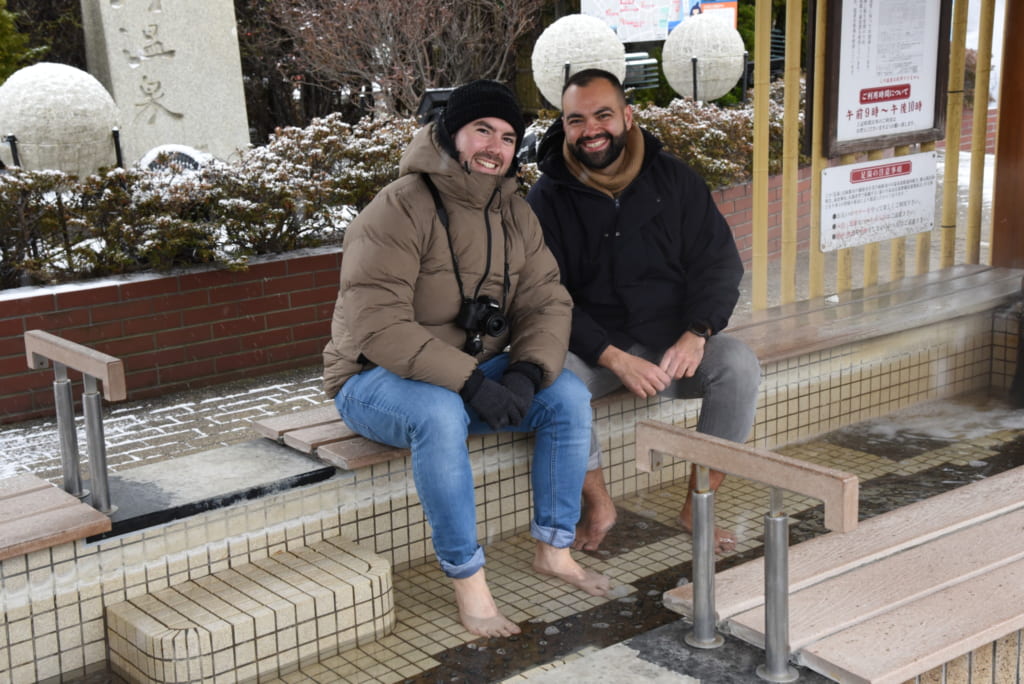
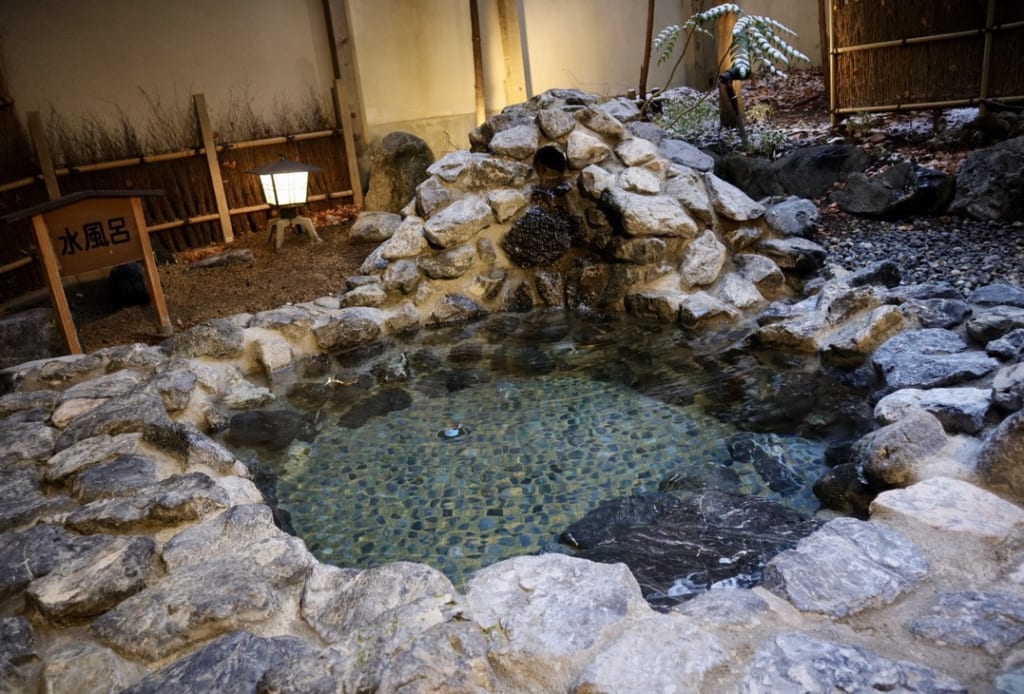
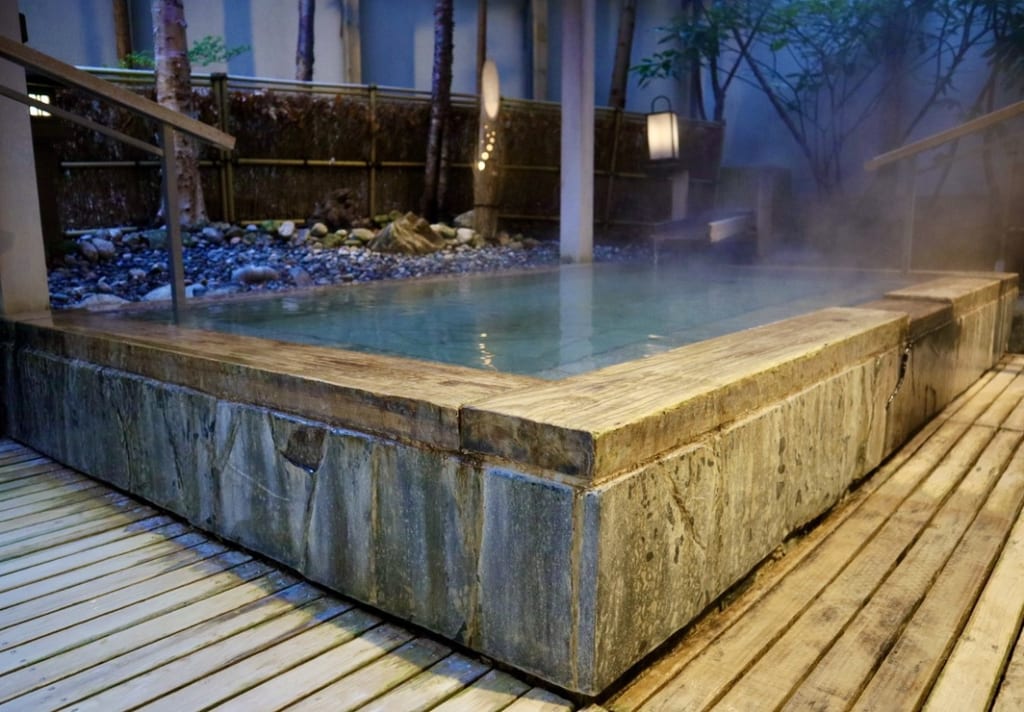
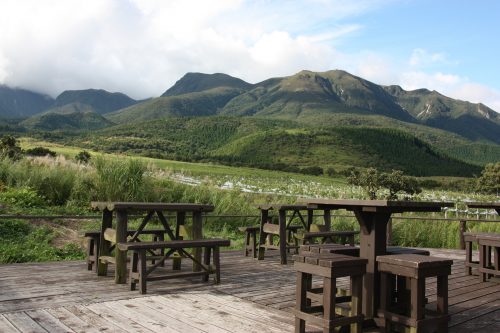
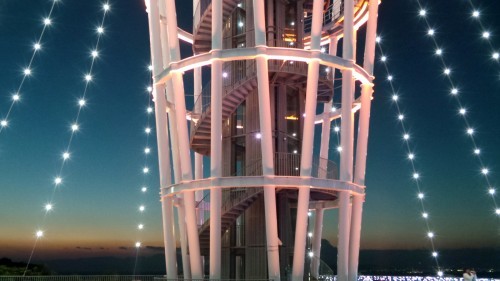
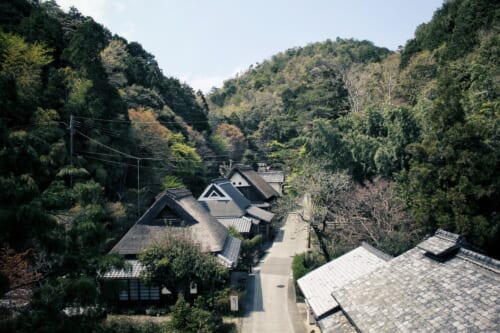
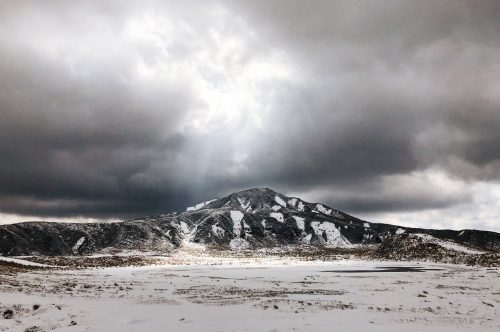
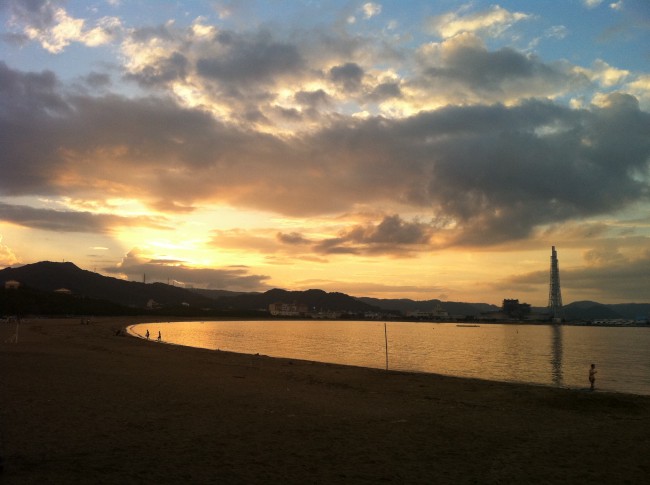


No Comments yet!